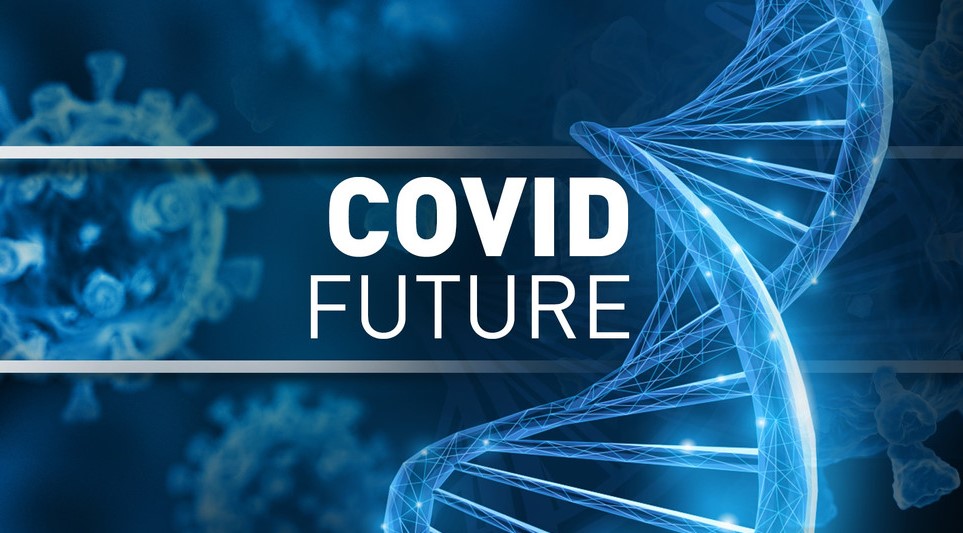 By B.N. Frank
By B.N. Frank
Over the past 2+ years, government and medical agencies worldwide have spent countless hours studying COVID-19 and COVID-19 variants. This includes the U.S. Army Medical Institute of Infectious Diseases (USAMRIID).
From Full Measure:
Covid Future
By Full Measure Staff Sunday, March 27th 2022
As we move past Omicron toward an uncertain Covid future, we get an assessment and update from a leading authority at the military’s Fort Detrick: Major Jeffrey Kugelman of the U.S. Army Medical Research Institute of Infectious Diseases, or USAMRIID.
Within the labs at USAMRIID, there’s ongoing work on Covid-19 and what could come next.
Major Jeffrey Kugelman: First we have to acquire the virus. And so we sequence samples every week from soldiers and sailors and airmen who get infected. And so when we see a new variant, we can turn that into a stock, grow it up, and then use that in animal experiments.
Major Jeffrey Kugelman is Division Chief of Molecular Biology here.
Kugelman: So the last time you were here, one of the things we developed over the last couple years is a large format surveillance platform. We call it BMASS — biodefense, mass sequencing, and surveillance. And essentially we finished the optimization of that, and we can surveil up to 12,000 samples in a 24-hour period.
Sharyl: To break that down, you’re talking about blood samples you take?
Kugelman: We’re working with saliva, so spit in the tube. And we did it so that in the military, we can take a large formation — hand out tubes, spit in tube, collect it, takes about 10 minutes. Instead of having to spend five minutes per person swabbing them. Here, we put a molecular barcode on it, process them and then put them on a sequencer. So they’re pooled before they go on the sequencer, but because they have that sequence barcode on it, we’re able to identify which patient is the positive result instead of having to break that pool apart and then test each individual.
Sharyl: So, what difference does that make in terms of time and effort over what you were doing?
Kugelman: So it’s much cheaper, $3 to $5 per test we’re doing, and it’s a huge volume.
Sharyl: What was the cost before? When you say “per test,” does that mean per tube?
Kugelman: So it depends, but it can go up to $150 per clinical diagnostic. Right now, almost all of the testing is devoted towards people who are showing symptoms or need to go back to school or things like that. And so we were able to go after healthy populations and see how much of a background transmission we have. So we were able to identify asymptomatic and pre-symptomatic carriers of the virus who had very high viral loads, but no symptoms. And so those were then able to be referred on for clinical testing — then they could be quarantined or treated, depending.
Sharyl: Is there a civilian application for it?
Kugelman: There is. I think of primary interest, the cruise industry could benefit from it. By being able to surveil the entire population the day before you arrive into port to let off people who are not sick would be hugely advantageous to them. So I do think there are commercial applications.
Sharyl: Who is it who’s watching out for the possibility that some nefarious force takes some sample of COVID that’s so easily accessible now and turns it into something bad or a bioweapon?
Kugelman: So that’s us. USAMRIID sprung up from when Nixon ended our offensive bioweapons program. And so now we’re a defensive biodefense program. And so part of our job is to assess all ongoing outbreaks and look and see if they’ve been manipulated.
Sharyl: Have you seen anything suspicious so far?
Kugelman: So there’s an ongoing discussion about Omicron, and we don’t have enough evidence to say, but it did not follow the trajectory of the outbreak. And so we’re still looking into why Omicron is so different, but it is quite different than we were expecting.
Sharyl: What do you see that worries you?
Kugelman: At this point, I’m not overly worried about any SARS-related potential. It could get worse. It could get less lethal over time. Time will tell. This is a very normal host-pathogen interaction over time. It remains to be seen, but I’m not particularly worried about anything right now.
Sharyl: If you had to guess where we would be a year from now, what would you say?
Kugelman: If I had to speculate, it’ll die down after Omicron. Case loads will come back down into something tolerable, and then the virus will diversify again. And then once enough of a naive population — so there’s a waning immunity and folks born and things like that, that create these people who haven’t been exposed or vaccinated — once there’s enough of them, we’ll see another surge. Whether that’ll be a more dangerous virus or not remains to be seen. But I suspect that we will be dealing with this for quite a while. Likely, this may go into the background, if something new comes that we’ll be talking about next time.
Sharyl (on-camera): Major Kugelman says that mass surveillance platform they developed for Covid can now also hunt for flu at the same time in the same cheap, large-format samples.
Activist Post reports regularly about COVID-19. For more information visit our archives.
Become a Patron!
Or support us at SubscribeStar
Donate cryptocurrency HERE
Subscribe to Activist Post for truth, peace, and freedom news. Follow us on SoMee, Telegram, HIVE, Flote, Minds, MeWe, Twitter, Gab, What Really Happened and GETTR.
Provide, Protect and Profit from what’s coming! Get a free issue of Counter Markets today.